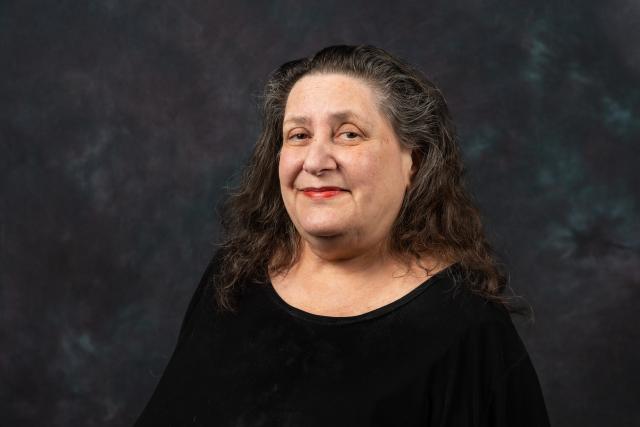Q&A: New Jersey Is a Leader on Environmental Justice

Kean sociology Professor Celene Krauss, Ph.D., is an expert on the intersection of gender, race, class and environmental justice, and has researched and written extensively on women in the environmental justice movement. She spoke to Kean News about environmental justice, the role of women, and the impact of Black Lives Matter.
Q. We have a new law in New Jersey signed by Gov. Phil Murphy, S-232, that protects at-risk communities by restricting the siting of facilities such as sewage treatment plants, incinerators and factories. In brief, what does this law do?
This bill, which was signed into law in August, is considered one of the major landmark bills of its kind in the United States. It is designed to protect vulnerable marginalized communities. A facility will not be built if environmental justice impact studies show that such a facility poses additional and disproportionate health and environmental risks to low-income communities and communities of color.
Q. Why is this important?
Environmental burdens such as sewage treatment plants, landfills and incinerators have historically been unjustly located in communities of color and low-income communities. These communities are invisible “sacrifice zones” for our country’s industrial and hazardous wastes. Sacrifice zones are not new — from slavery through Jim Crow and more recently, unjust zoning practices and racial segregation, low-income communities and communities of color have been environmentally vulnerable. The result has been widespread and invisible health disparities as these communities faced increases in asthma, lead poisoning, cancer, and heart and lung disease.
Q. You focus especially on women and mothers who are working to make a difference. What do you believe women and mothers bring to this environmental justice effort?
They bring to these protests their everyday life and lived experience. Women are often responsible for the health of the family. They see what is going on with their children. If their child is sick, they notice the symptoms. They talk with other mothers, grandmothers and community mothers. In one community in Massachusetts, a mother took her son to be treated for leukemia, and at the hospital she noticed other mothers there from her community. This knowledge helped to spur a major organizing effort. It is not surprising that women of color and low-income women started this movement. Their mothering work has often extended to challenging racial, social and economic injustice in their communities.
In 1982, 200 African-American women lay on the road to block trucks that were to put a PCB dump in Warren County, N.C., and the movement against environmental racism was born. Those women made history as the first in the country to make the connection between race and the siting of a dump when they questioned the selection of their community, which was 99th on the site selection list. They lost their protest, but this protest set in motion a process of critical questioning across the United States about environmental racism.
Q. Have women been effective in stopping environmental racism?
Many have been able to stop facilities from being sited, but not always. These are struggles that go on for years. Some are won, some are lost. One effect of this movement is bringing communities together.
The grassroots activism of the 1980s coalesced in the social movement of the 1990s, as people from low-income communities and communities of color came together in 1991 at the First People of Color Environmental Leadership Summit. African-American, Latinx, Native American, Asian-American and poor communities challenged what was seen as a more mainstream environmental movement that had excluded their voices.
I was there and for four days interviewed women. They talked about the struggle and their hope to bring about change. They became part of the environmental justice movement. Regional and national coalitions were established, and professionals helped provide resources. People learned they were not alone.
Fast forward three decades. The environmental justice movement is ongoing as unjust environmental conditions are challenged in communities of color and low-income neighborhoods. It sparked the climate justice movement — recognition of the ways in which certain communities in the United States and around the world are more vulnerable to the ravages of climate change. Issues such as lead poisoning in Flint, Michigan are now understood in the framework of environmental racism. The language of environmental racism and environmental justice provides a framework to understand institutional racism around environmental issues in women’s communities.
Q. Has the Black Lives Matter movement had an effect?
Yes. In New Jersey, for example, the new environmental justice law was first introduced in 2008. But this year, a few things changed. The state now has a governor who supported environmental justice legislation. And two things happened that provided a more supportive climate.
First, studies showed that communities of color had higher rates of COVID-19. A Harvard study said people in more polluted communities are more vulnerable to COVID-19, and pollution was now seen as a pre-existing condition.
Second, the racial justice protests and the work of Black Lives Matter created a climate for focusing on the importance of challenging institutional racism — a central theme of the environmental justice movement.
Q. Where does the movement go from here?
Much work still needs to be done. The institutional climate that creates these inequities still exists. But legislation such as the New Jersey law takes these communities one step closer to environmental justice. Many of my students live in these vulnerable, hard-hit communities in New Jersey and are moved as they become aware of the extent these communities have been harmed. Like me, they also find hope in the women who continue to fight for justice in a difficult historical context where their communities and environmental safety are still under assault.